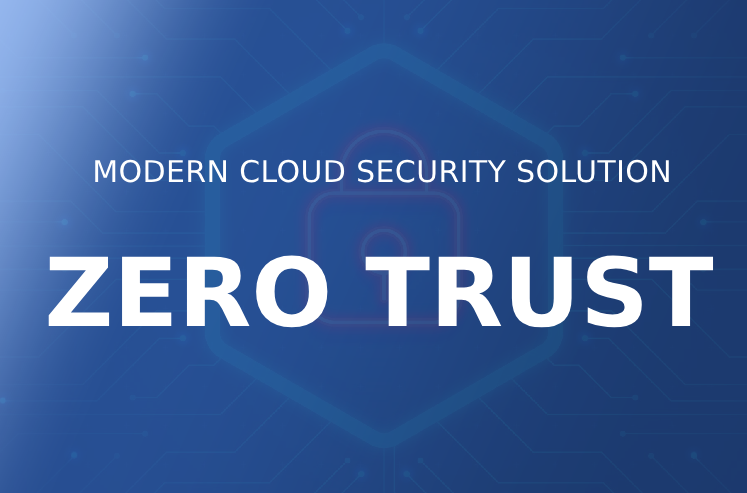Staying current is not an option in today’s corporate world; it is a requirement. Embracing technological improvements is necessary if you want to stay ahead of the curve. Enter the hybrid cloud era—a game-changer that’s shaking up how businesses roll. Let’s unpack this innovation’s core and see how it’s reshaping modern biz strategies.
So, what’s this hybrid cloud buzz all about? With our configuration, you get the ideal balance of benefits: exceptional security, smooth scalability, and unparalleled flexibility. It’s the ideal blend that fulfills every requirement of yours. It blends public and private cloud options. This combo lets companies tap into the best of both worlds, optimizing resources while keeping a tight grip on sensitive data.
The journey of cloud computing has been mind-blowing. From those antiquated on-site systems to industry titans like AWS, Azure, and Google Cloud, we’ve gone a long way. Now, we’re discussing a whole new idea known as the hybrid cloud. It’s been an interesting trip across several tech environments! This leap is massive—it’s changed how we handle data, how accessible it is, and how cost-effective we can be.
Why’s everyone jumping on the hybrid cloud bandwagon? ‘Cause it’s a big deal in today’s business scene.Traditional on-site systems have seen a dramatic transition, and major cloud platforms like AWS, Azure, and Google Cloud are now the norm. We’re currently exploring the realm of hybrid cloud solutions. Because of its extraordinary adaptability, organizations can quickly adjust to fluctuations in demand, guaranteeing outstanding performance and efficiency every step of the way.

Overview of Hybrid Cloud Architecture
Hybrid cloud architecture combines the strengths of both public and private cloud environments, allowing seamless data sharing and application deployment across these platforms. It grants businesses the flexibility to leverage resources based on specific needs, optimizing performance while maintaining control over sensitive data.
Benefits of Adopting a Hybrid Cloud Approach
- Scalability and Flexibility
One of the primary advantages of hybrid cloud is its scalability. It enables businesses to scale resources up or down according to demand, ensuring optimal performance during peak periods while minimizing costs during lulls.
- Security Enhancements
Hybrid cloud models offer heightened security measures by allowing critical data to reside in private clouds, safeguarding it from external threats. Encryption and strict access controls further fortify data protection.
- Cost Efficiency
Cost efficiency is a driving force behind hybrid cloud adoption. By balancing workloads between public and private clouds, organizations optimize expenditure while ensuring high performance.
Challenges Associated with Hybrid Cloud Integration
- Data Security and Compliance
Maintaining compliance standards across various cloud environments poses a challenge. Adequate measures, such as encryption and regular audits, are crucial to ensure data integrity and compliance.
- Interoperability and Integration
Integrating diverse systems and applications within hybrid cloud setups requires careful planning. Seamless interoperability among platforms is key to maximizing efficiency.
- Management Complexity
Managing multiple cloud environments can be complex. Adopting robust management tools and strategies is essential for streamlined operations and resource optimization.
Key Considerations for Hybrid Cloud Adoption
Assessing Workload and Application Requirements
Understanding your workload and application needs is paramount. Identify which workloads are suitable for the cloud, considering factors like scalability, performance, and data sensitivity. This evaluation ensures optimal resource allocation and smooth operations within the hybrid environment.
Security and Compliance Planning
Security should be a top priority. Implement robust security measures and compliance protocols to safeguard sensitive data. Encryption, access controls, regular audits, and compliance adherence are crucial for maintaining data integrity and meeting regulatory requirements.
Selecting the Right Hybrid Cloud Providers
Choosing the right providers is a make-or-break decision. Assess providers based on factors like reliability, service-level agreements (SLAs), data center locations, scalability options, and their alignment with your specific business needs and budget.
Integration and Interoperability Strategies
Seamless integration of existing infrastructure with the hybrid cloud is key. Employ strategies that facilitate interoperability between on-premises systems and cloud environments. APIs, middleware, and standardized protocols play a vital role in achieving this harmony.
Data Management and Governance Protocols
Develop a comprehensive data management strategy encompassing data storage, accessibility, and lifecycle management. Implement robust governance protocols to maintain data quality, ensure compliance, and enable efficient data utilization across the hybrid infrastructure.
Monitoring, Optimization, and Maintenance Plans
Continuous monitoring is essential for identifying performance bottlenecks, security threats, or compliance gaps. Establish optimization and maintenance plans to fine-tune the hybrid environment regularly. Proactive measures prevent issues before they escalate, ensuring optimal performance.
Steps to Implement Hybrid Cloud Adoption
Evaluation Phase
The initial step in transitioning to a hybrid cloud infrastructure involves a thorough evaluation process. This includes scrutinizing the existing infrastructure to understand its strengths, weaknesses, and capabilities. By meticulously analyzing the current setup, businesses gain insights into what can be seamlessly integrated into the hybrid cloud environment.
Simultaneously, identifying workloads suitable for migration is crucial. Prioritizing these workloads based on their compatibility with the hybrid cloud ensures a smoother transition without disrupting critical operations.
Planning and Strategy Development
Once the evaluation phase is complete, the focus shifts to strategic planning. Designing a robust hybrid cloud architecture that aligns with organizational objectives is pivotal. Right now, we’re working on a blueprint that blends the best features from public and private cloud infrastructures. Our goal is to design a system that ensures optimal security, scalability, and effectiveness.
Crafting migration roadmaps is equally essential during this phase. These roadmaps outline the step-by-step process of migrating workloads to the hybrid cloud environment, minimizing risks and ensuring a structured transition.
Execution and Implementation
Executing the strategy begins with pilot testing and deployment. By conducting small-scale trials, businesses can validate the effectiveness of their hybrid cloud architecture. This phase enables them to identify and rectify potential issues before full-scale implementation.
Migration and integration processes follow suit, involving the transfer of identified workloads to the hybrid cloud environment. A meticulous approach and adherence to the migration roadmap guarantee a smooth transition, mitigating any disruptions to business operations.
Post-Implementation Monitoring and Optimization
Post-implementation, continuous monitoring and optimization are imperative for maintaining peak performance. Performance monitoring and evaluation tools help track the hybrid cloud environment’s efficiency, identifying any bottlenecks or areas needing improvement.
Implementing continuous improvement strategies ensures that the hybrid cloud infrastructure evolves alongside the business requirements. Regular updates, optimizations, and adaptations enhance its efficacy and resilience.
Highlighting Successful Hybrid Cloud Implementations
One standout case study showcases Company X, a mid-sized enterprise in the retail sector. By seamlessly blending their on-premises infrastructure with a public cloud platform, they experienced a significant surge in operational agility. This fusion allowed them to efficiently manage fluctuating demands during peak seasons, ensuring seamless customer experiences while optimizing costs.
Discussing Benefits and Challenges Faced by Different Businesses
The benefits of adopting a hybrid cloud model are manifold. It empowers businesses to strike a balance between security and scalability, fostering innovation while ensuring data integrity. However, challenges persist, with data integration and system compatibility topping the list. Despite these hurdles, the adaptability of hybrid cloud solutions has been pivotal in enhancing business resilience.
Lessons Learned and Best Practices
Learning from these success stories, businesses have discovered essential best practices. Prioritizing a robust data management strategy, emphasizing seamless integration, and investing in employee training are critical. These lessons learned pave the way for successful hybrid cloud adoption, ensuring a smoother transition and maximizing its potential.
Key Takeaways
The hybrid cloud stands as a linchpin for modern businesses, merging on-site infrastructure with cloud services to unlock unparalleled potential. Its significance lies in flexibility, scalability, and fortified security while managing costs effectively.
Looking forward, the hybrid cloud’s role in business transformation is paramount. It fuels innovation, enabling agility, streamlined data management, and elevated customer experiences, promising sustained growth and competitive advantage. Encouraging further exploration is vital. Embrace tailored hybrid cloud solutions for your industry, uncovering uncharted efficiencies and breakthroughs. It’s not merely an option but a pivotal driver of future success.
Looking for a cloud solution? ITAdOn is here to help you navigate the possibilities. Our expertise in crafting tailored hybrid cloud solutions ensures that your business stays ahead in security, scalability, and efficiency. Call us today to embark on your cloud journey!





